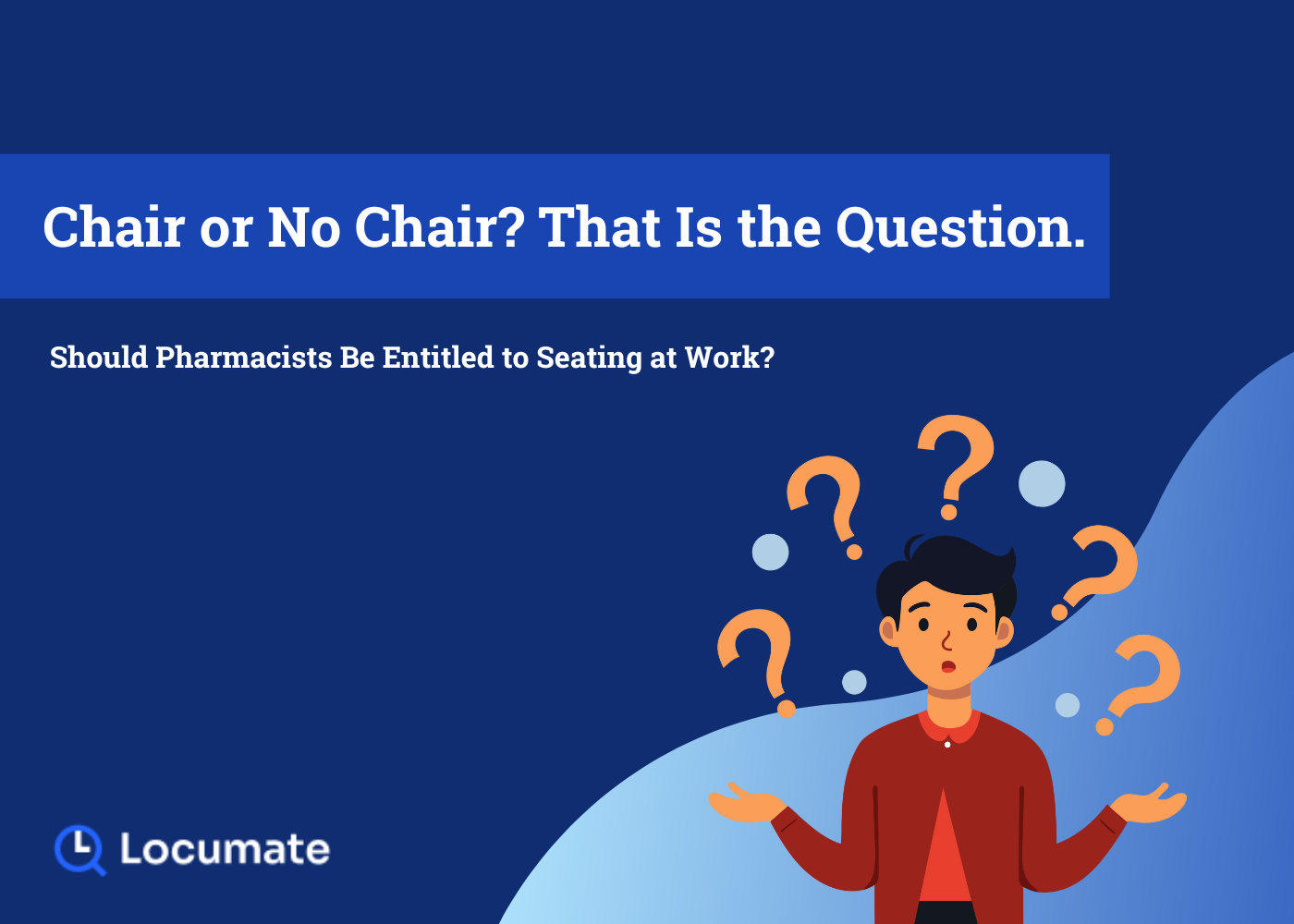Should Pharmacists Be Entitled to Seating at Work?
The age-old question in pharmacy—how to avoid sore feet—often makes us envious of the checkout staff in Aldi. Should pharmacists also have the right to a chair at work?
The Locumate team recently posted a short-form video on LinkedIn, playfully highlighting the various standing positions pharmacists adopt behind the dispensary counter. This video unexpectedly sparked significant online discourse about the working conditions of pharmacists.
One commenter noted, “While this video humorously depicts the creative ways pharmacists try to rest their feet, it highlights a significant issue in our profession. Standing for extended periods, often 8+ hours, can take a toll on our health.” Another added, “I understand the nature of the job requires movement, but we need to take care of ourselves and rest when needed. Several [pregnant] pharmacist mothers have mentioned they must stand through 8-10 hour shifts with no place to sit.” Another comment joked, “Being able to sit at work was one of the main reasons I switched to hospital pharmacy!”
Indeed, standing for prolonged periods of time poses a health risk. SafeWork Australia states, “Prolonged standing can increase the risk of fatigue and illness. Workers should not stay in a seated, standing, or static posture for long periods.” Risks of prolonged standing include lower back pain, cardiovascular complications, and varicose veins, with these risks amplified during pregnancy.
Conversely, sitting for long periods also carries risks, including musculoskeletal disorders, heart disease, diabetes, obesity, poor mental health, and some cancers, according to SafeWork Australia.
To achieve a balance, employees should alternate between sitting and standing. One commenter from the LinkedIn post remarked, “This is an OHS issue, and an employer cannot prevent an employee from sitting if needed. A reasonable request for seating should not be refused.” While pharmacy work often involves standing and moving around, some tasks, such as administrative work, checking prescriptions or DAAs, can be done while seated.
Requesting a chair may feel uncomfortable due to current pharmacy workplace culture, but, as one commenter pointed out, “Everyone in pharmacy has a right to a physically safe working environment, and we need to address and change this.” It’s a cultural shift that requires collective effort to normalize safe working conditions for pharmacists.
“It’s important to remember that as we care for our patients, we also need to take care of ourselves. No healthcare role should demand that professionals work without adequate rest and comfort,” another commenter concluded. Pharmacy owners should be accountable for their staff’s comfort and safety, initiating conversations around improving working conditions. Pharmacists and staff should support one another’s needs to avoid unsafe working conditions.
“Providing seating options and encouraging regular breaks are essential for the well-being of healthcare workers, which ultimately benefits patient care. It’s a conversation worth having to promote a healthier work environment for all.” In terms of moving forward we hope this article opens up a bigger conversation around working conditions for all pharmacists in all stages of their career, in the hopes of fostering a better working culture.
“The next video should feature a pharmacist eating lunch without a lunch break!” And yes, thank you for the video inspiration!

